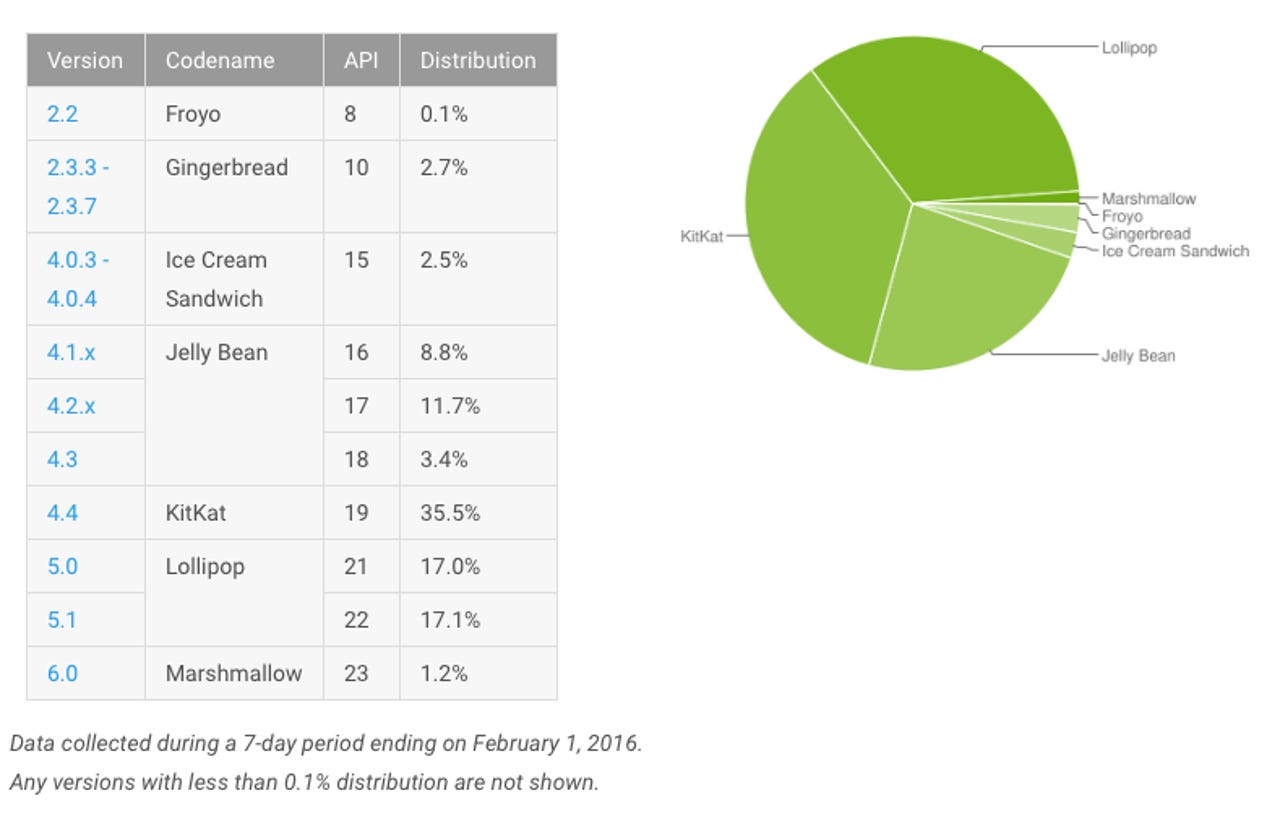After four months, Android Marshmallow finally hits 1.2 percent adoption


Google has detailed the versions of Android that connected to Google Play in the seven-day period ending February 1, 2016.
Google's newest version of Android has finally exceeded one percent market share of all Android devices, some four months after its original release.
Google took the wraps off Marshmallow at the end of September, alongside its new Nexus 5X and Nexus 6P. These and earlier Nexus devices have until this week remained the only handsets running the OS.
Nexus handsets are popular among those who want the latest version of Android and guaranteed speedy security patches. But they remain a minor part of the overall Android ecosystem that's dominated by Samsung.
See also
As of February 1, Marshmallow's adoption was 1.2 percent, up from 0.7 percent last month. The figures illustrate that Nexus devices account for only a small proportion of the more than one billion active Android devices currently in use.
Marshmallow adoption should accelerate in coming months, with Samsung last week kicking off its rollout in South Korea for the Galaxy S6 and S6 edge.
The Android version is slated for several more devices and more markets between February and April, including the new Galaxy S7, which looks likely to launch imminently.
For now, the two-and-a-half-year-old KitKat remains the most widely used version of Android, with 35.5 percent share, down form 36.1 percent last month.
It is followed by last year's version, Android Lollipop, which climbed from 32.6 percent to 34.1 percent of Android devices. Its continued ascent can be explained by a number of newly announced handsets that ship with Lollipop.
Meanwhile, long-abandoned versions of Android, such as the four-year-old Jelly Bean, continue to power a significant share of devices. Currently Jelly Bean represent 23.9 percent of all Android devices, down from 24.7 percent last month.
The even older Ice Cream Sandwich, Gingerbread, and Froyo still remain in Google's monthly chart, which only includes versions that have more than 0.1 percent distribution.
Froyo, which Google released in May 2010, should vanish from the chart soon enough, with its share now down to exactly 0.1 percent.